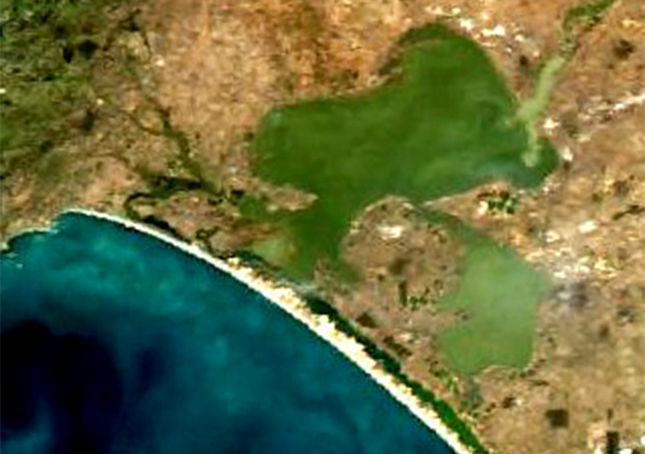Lake Alexandrina (South Australia)

Lake Alexandrina is a coastal freshwater lake[1] located between the Fleurieu and Kangaroo Island and Murray and Mallee regions of South Australia, about 100 kilometres (62 mi) south-east of Adelaide. The lake adjoins the smaller Lake Albert (together known as the Lower Lakes) and a coastal lagoon called The Coorong to its southeast, before draining into the Great Australian Bight via a short, narrow opening known as Murray Mouth.
Aboriginal people having an association with the lake were reported as knowing it by such names as Mungkuli, Parnka and Kayinga.
English settlers named the lake after Princess Alexandrina, niece and successor of King William IV of Great Britain and Ireland. When the princess ascended the throne and took the name Queen Victoria, there was some talk of changing the name of the lake to Lake Victoria, but the idea was dropped.
Lake Alexandrina is located north of Encounter Bay and east of Fleurieu Peninsula within what are now the two following South Australian government regions: Fleurieu and Kangaroo Island region, and the Murray Mallee region.
The Murray River is the major river to flow into Lake Alexandrina. Others include the Bremer, Angas, and Finniss rivers, all from the eastern side of the southern Mount Lofty Ranges. The lake is shallow and contains a number of islands near the southern end. Loveday Bay is an inlet located at the south-east of Lake Alexandrina, adjacent to Tauwitchere Channel. Lake Alexandrina is connected by a narrow channel to the smaller Lake Albert to the south-east.
The lake empties into the Southern Ocean via a channel known as the Murray Mouth, south-east of the town of Goolwa, but when the river flow is low, the mouth is often blocked by a sand-bar. Originally subjected to tidal and storm inflows of seawater, the lake is now maintained as a fresh water one by a series of barrages known as the Goolwa Barrages; these cross five channels between the mainland and three islands near the Murray Mouth.
Though the lake has been historically connected to the ocean, the fresh and salt water flows mixed very little, with the lake area remaining fresh over 95% of the time with normal river inflow.
Salt water inflows from the ocean would result in relatively little mixing of fresh and salt water, either vertically in the water column or laterally across the flow stream.[11] An 2020 review of hundreds scientific studies relating to the Coorong, Lower Lakes and Murray Mouth has found that it was a freshwater ecosystem prior to European settlement of South Australia.
Hindmarsh Island is reputed to be the largest island in the world with salt water on one side and fresh water on the other.
